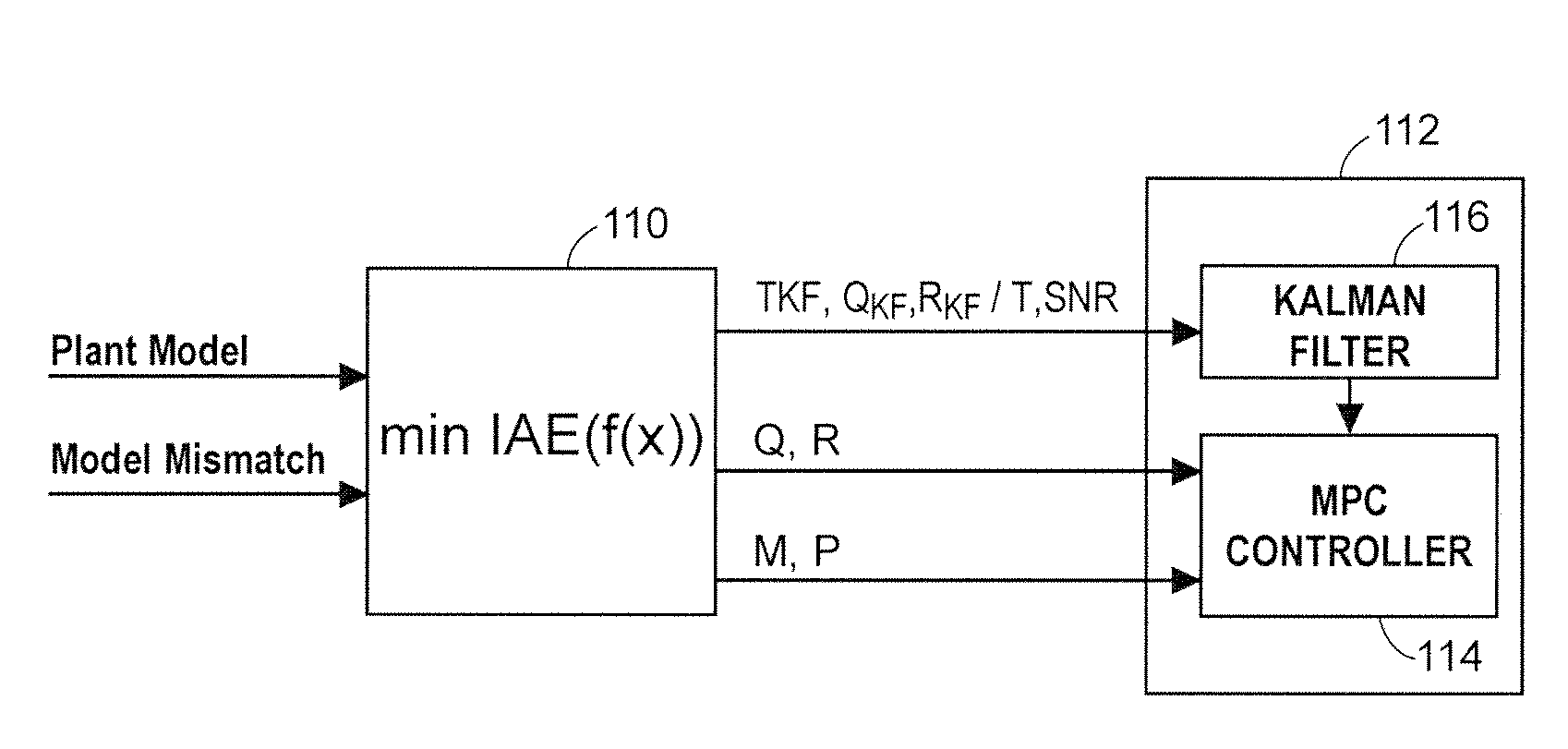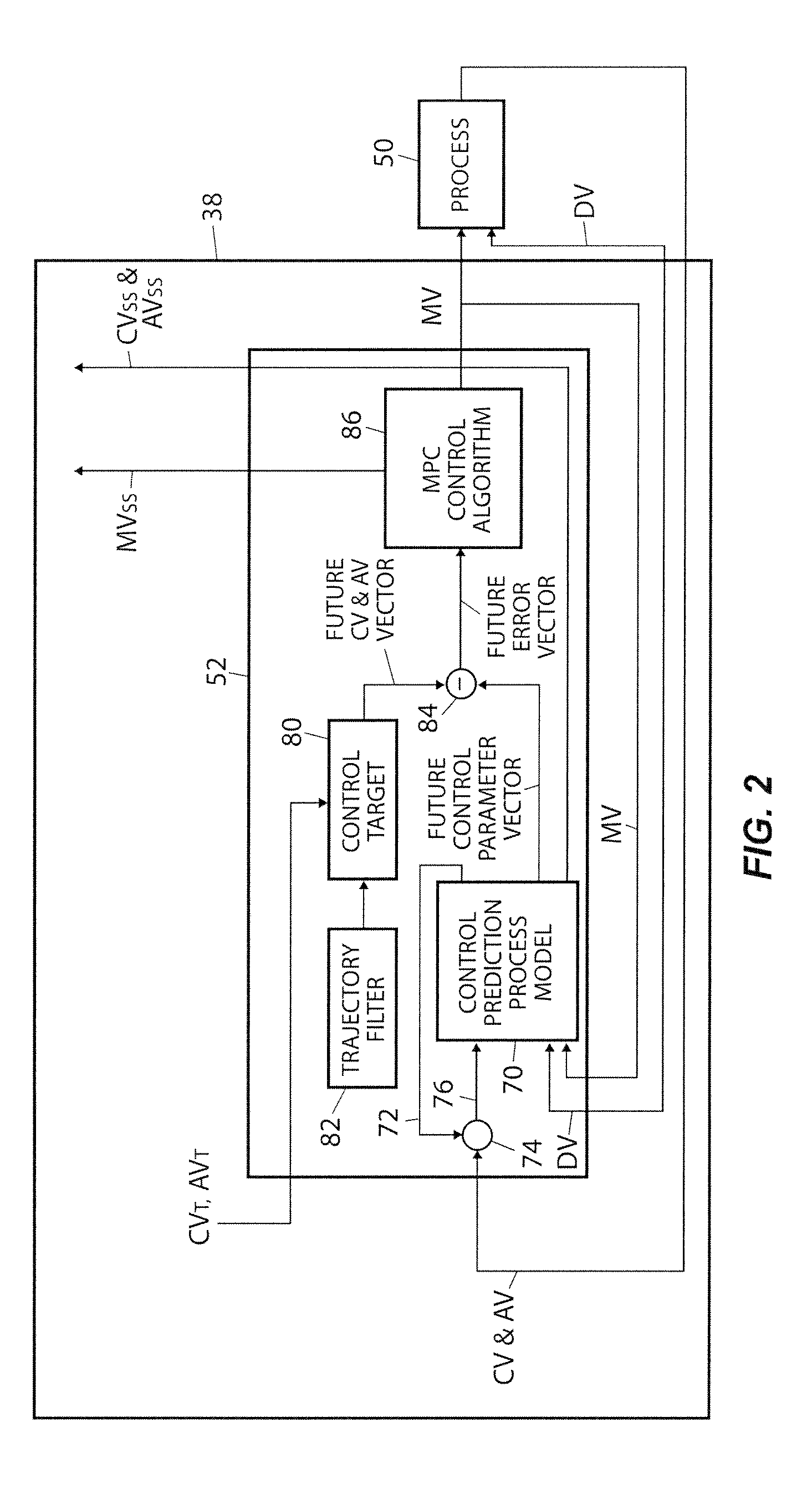Robust adaptive model predictive controller with tuning to compensate for model mismatch
a model mismatch and adaptive model technology, applied in adaptive control, computer control, instruments, etc., can solve problems such as performance gaps between pid and mpc controllers, and achieve the effects of improving the disturbance rejection performance of mpc controllers, best overall performance, and enhanced mpc controller performan
- Summary
- Abstract
- Description
- Claims
- Application Information
AI Technical Summary
Benefits of technology
Problems solved by technology
Method used
Image
Examples
Embodiment Construction
[0047]Generally speaking, a new controller adaptation, design and tuning method is discussed herein that may be applied to various different types of model predictive control (MPC) controllers for use in any desired or appropriate controller setting. However, this new controller adaptation, design and tuning method is particularly useful in control systems used in process plants, such as in industrial process plants, like drug and chemical manufacturing plants, refinery plants, etc. Moreover, while the new MPC controller adaptation, design and tuning technique is described herein as being implemented as part of a distributed process control network, it could also be implemented in other types of control environments including, for example, as a part of a centralized control system, as part of a programmable logic control (PLC) system, as part of a stand-alone control system, etc.
[0048]Referring now to FIG. 1, a process control system 10 in which the MPC controller adaptation, design...
PUM
 Login to View More
Login to View More Abstract
Description
Claims
Application Information
 Login to View More
Login to View More - R&D
- Intellectual Property
- Life Sciences
- Materials
- Tech Scout
- Unparalleled Data Quality
- Higher Quality Content
- 60% Fewer Hallucinations
Browse by: Latest US Patents, China's latest patents, Technical Efficacy Thesaurus, Application Domain, Technology Topic, Popular Technical Reports.
© 2025 PatSnap. All rights reserved.Legal|Privacy policy|Modern Slavery Act Transparency Statement|Sitemap|About US| Contact US: help@patsnap.com



